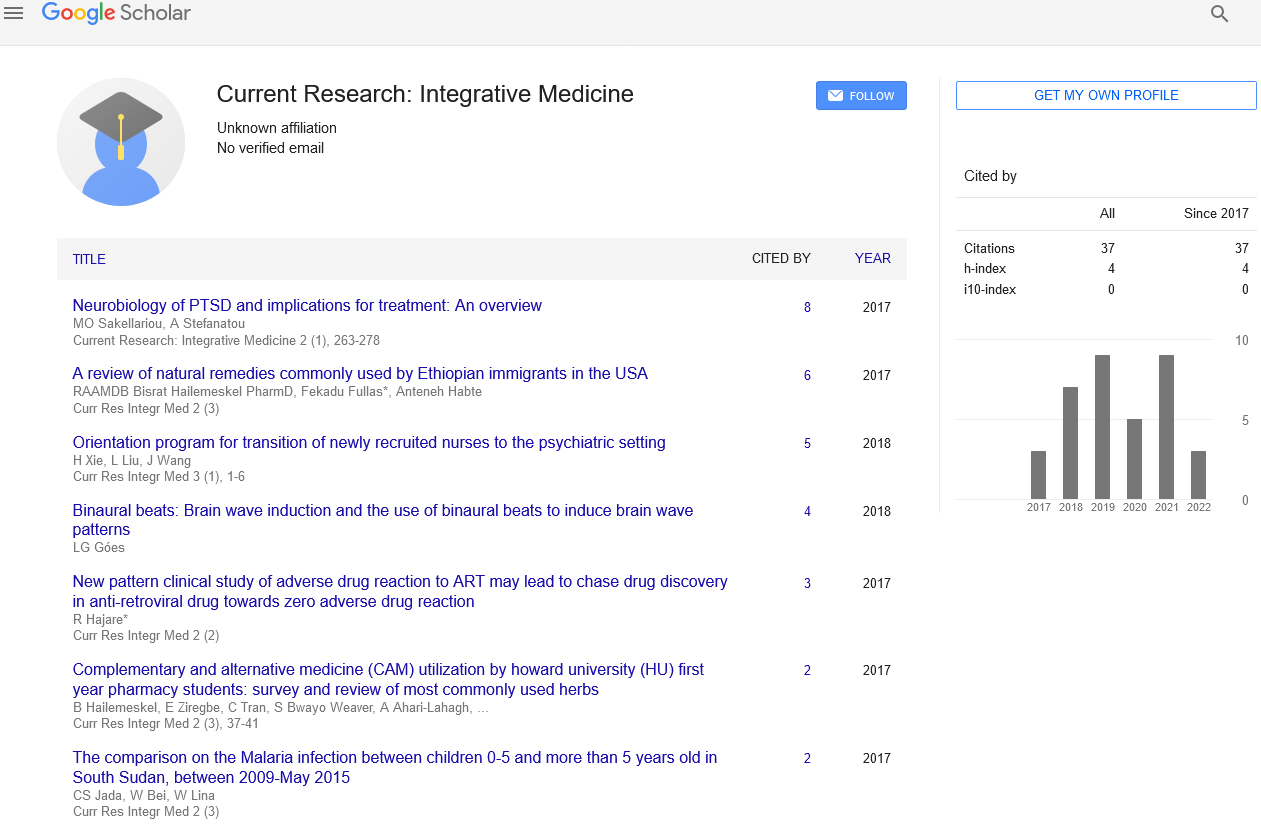The evolution and impact of rehabilitation: A comprehensive overview
Received: 27-Jul-2024, Manuscript No. pulcrim-24-7125; Editor assigned: 30-Jul-2024, Pre QC No. pulcrim-24-7125(PQ); Reviewed: 06-Aug-2024 QC No. pulcrim-24-7125 (Q); Revised: 06-Aug-2024, Manuscript No. pulcrim-24-7125(R); Published: 10-Aug-2024
This open-access article is distributed under the terms of the Creative Commons Attribution Non-Commercial License (CC BY-NC) (http://creativecommons.org/licenses/by-nc/4.0/), which permits reuse, distribution and reproduction of the article, provided that the original work is properly cited and the reuse is restricted to noncommercial purposes. For commercial reuse, contact reprints@pulsus.com
Abstract
Rehabilitation is a multidisciplinary approach aimed at restoring an individual's functional abilities and improving quality of life following illness, injury, or disability. This article explores the evolution of rehabilitation practices, from its early roots to contemporary methods, highlighting its significance in modern healthcare. The article also addresses challenges and future directions for rehabilitation, emphasizing the need for continued innovation and personalized care.
Key Words
Rehabilitation; Physical therapy; Occupational therapy; Integrated care; Recovery
Introduction
Rehabilitation is a cornerstone of modern healthcare, designed to assist individuals in recovering from illnesses, injuries, or disabilities and to enhance their overall quality of life. The concept of rehabilitation spans various disciplines and practices, reflecting its broad applicability and importance. Historically, rehabilitation has evolved from rudimentary methods to sophisticated, evidence-based practices that incorporate advancements in medical science, technology, and understanding of human psychology.
The goals of rehabilitation are multi-faceted, focusing not only on physical recovery but also on psychological and social reintegration. This holistic approach recognizes that recovery is not solely about physical healing but also about regaining independence and improving mental well-being. As medical and therapeutic sciences continue to advance, so too does the scope and effectiveness of rehabilitation strategies.
Historical overview
The origins of rehabilitation can be traced back to ancient civilizations where rudimentary methods were employed to aid those with injuries or disabilities. The Greeks and Romans, for example, utilized various forms of physical therapy and exercise to treat ailments. However, it was not until the late 19th and early 20th centuries that rehabilitation began to develop into a more structured and specialized field.
In the aftermath of World War I and World War II, the need for comprehensive rehabilitation services became evident due to the large number of soldiers returning with physical and psychological trauma. This period marked the beginning of formal rehabilitation programs, incorporating physical therapy, occupational therapy, and psychological counseling to address the diverse needs of individuals recovering from war-related injuries and conditions.
Modern rehabilitation practices
Today, rehabilitation encompasses a wide range of practices, each tailored to address specific aspects of recovery. Key areas include:
Physical therapy: Focuses on improving movement and function through exercises, manual therapy, and modalities such as heat or cold therapy. Physical therapists work with patients recovering from injuries, surgeries, or conditions like stroke and arthritis.
Occupational therapy: Aims to help individuals perform everyday activities and tasks that are essential for daily living. Occupational therapists address challenges related to fine motor skills, cognitive functions, and adaptive techniques, enabling patients to achieve greater independence.
Psychological support: Recognizes the impact of mental health on recovery. Psychologists and counselors provide therapy to address issues such as depression, anxiety, and adjustment disorders, helping individuals cope with the emotional aspects of their recovery journey.
Speech and language therapy: Assists individuals with communication and swallowing difficulties, often resulting from neurological conditions, brain injuries, or developmental disorders.
Rehabilitation engineering and assistive technology: Involves the use of specialized devices and technologies to support physical function and improve quality of life. This includes prosthetics, orthotics, and adaptive devices that enable individuals to perform daily tasks more effectively.
Integrated approaches to rehabilitation: A significant trend in contemporary rehabilitation is the integration of various therapeutic disciplines to provide a comprehensive approach to recovery. Multidisciplinary teams, including physical therapists, occupational therapists, psychologists, and medical doctors, collaborate to create personalized rehabilitation plans that address the full spectrum of an individual's needs.
This integrated approach ensures that all aspects of recovery are considered, from physical and cognitive functions to emotional wellbeing. For example, a patient recovering from a stroke may benefit from physical therapy to regain mobility, occupational therapy to adapt to new ways of performing daily tasks, and psychological support to cope with the emotional impact of their condition.
Challenges and future directions
Despite the advances in rehabilitation, several challenges remain. Access to rehabilitation services can be limited, particularly in underserved areas, leading to disparities in care. Additionally, the need for personalized and patient-centered approaches requires ongoing research and innovation.
The future of rehabilitation lies in the continued integration of advanced technologies, such as telehealth, virtual reality, and artificial intelligence, to enhance treatment outcomes and accessibility. Personalized medicine and data-driven approaches are also expected to play a crucial role in developing targeted rehabilitation strategies that cater to individual needs.
Moreover, there is a growing recognition of the importance of early intervention and preventative rehabilitation. Addressing potential issues before they become severe can significantly improve recovery outcomes and reduce the overall burden on healthcare systems.
Conclusion
Rehabilitation is a dynamic and evolving field that plays a critical role in helping individuals recover from illness, injury, or disability. From its historical roots to its current practices, rehabilitation has continually adapted to meet the changing needs of patients and advances in medical science. The integration of various therapeutic disciplines and the focus on personalized care underscore the importance of a holistic approach to recovery.
As we look to the future, continued innovation and research will be essential in addressing the challenges and maximizing the potential of rehabilitation.






